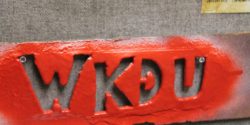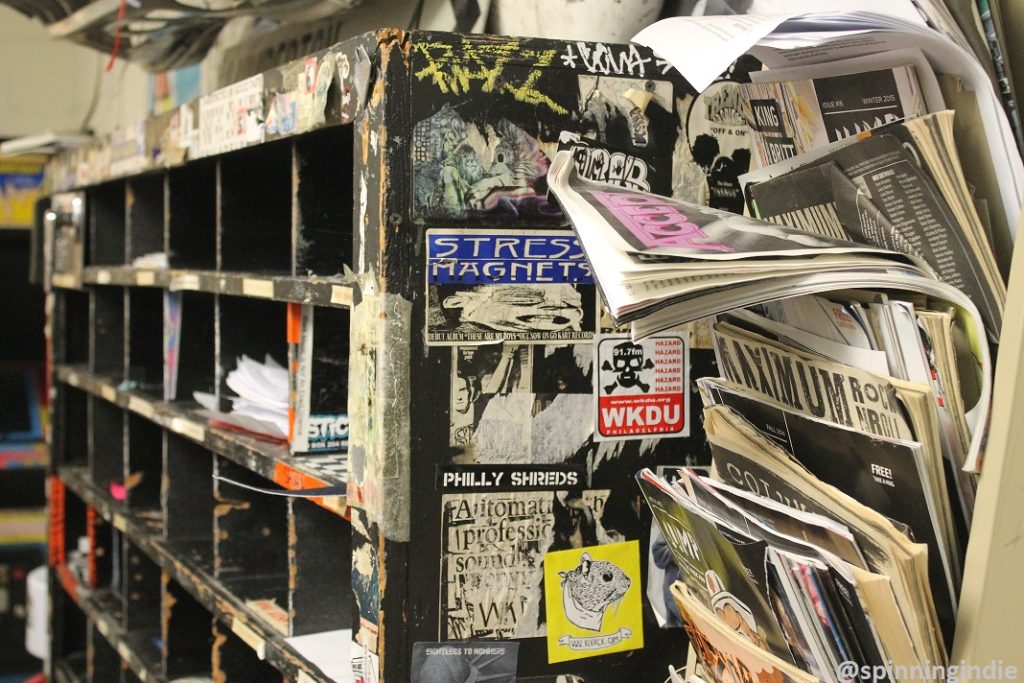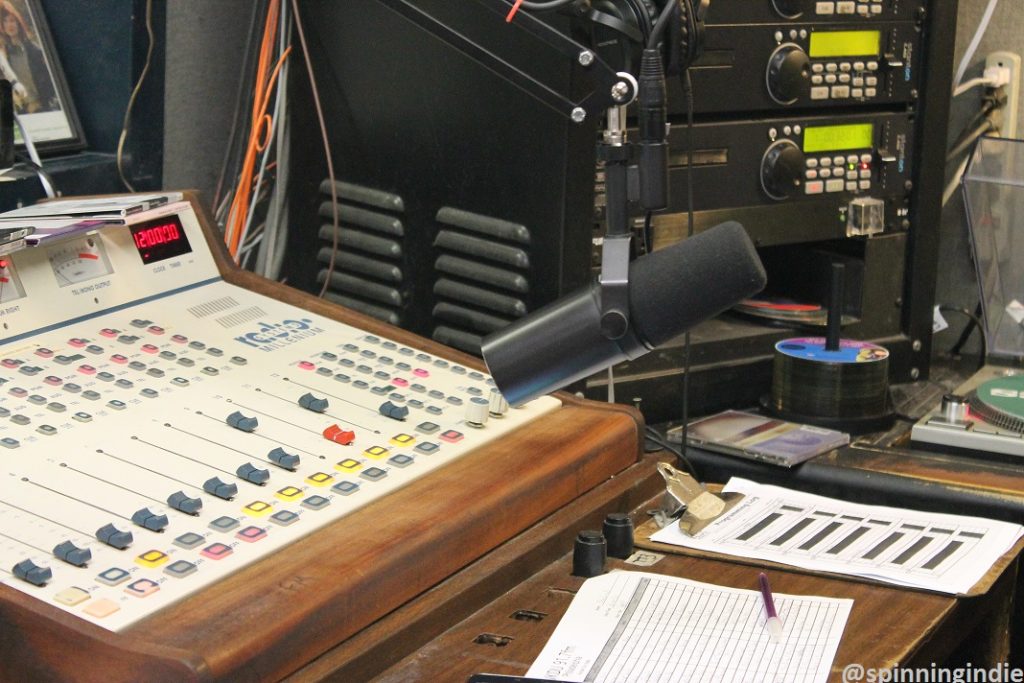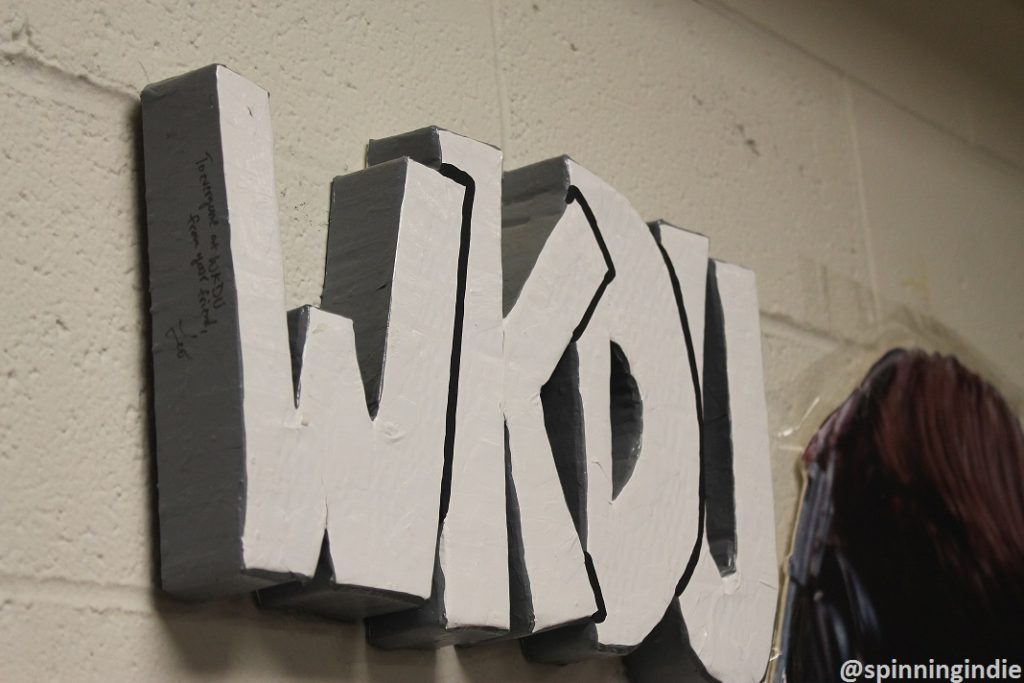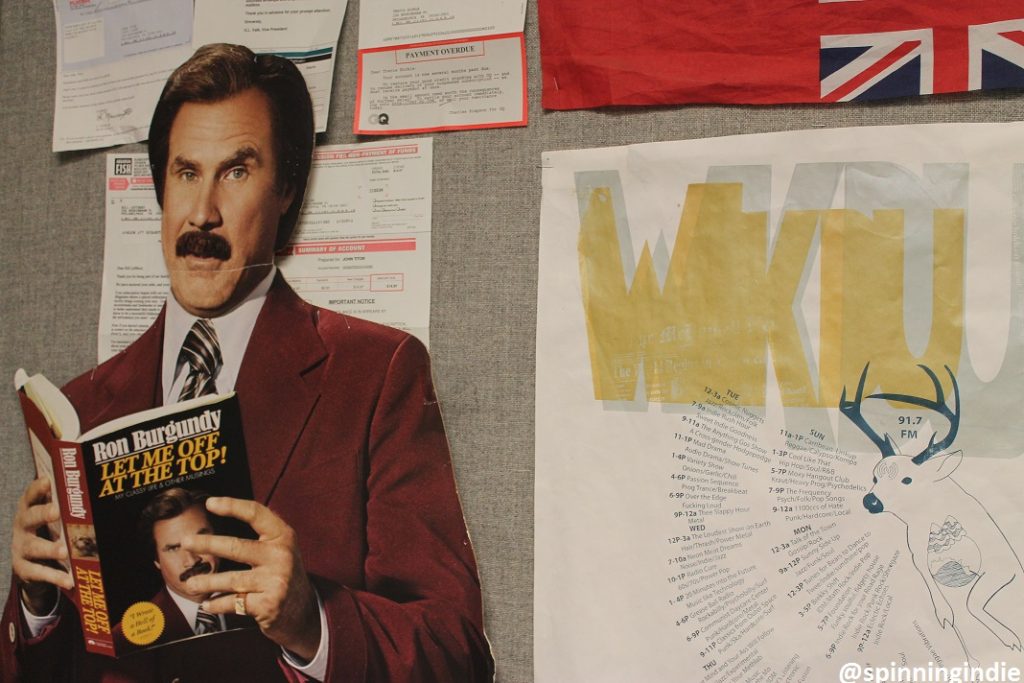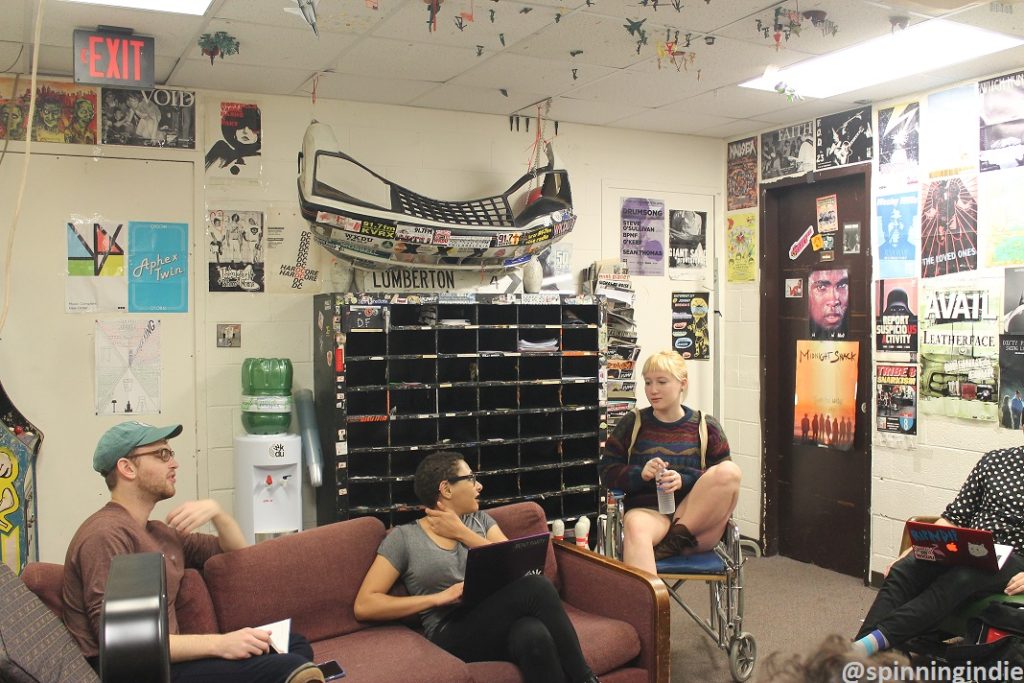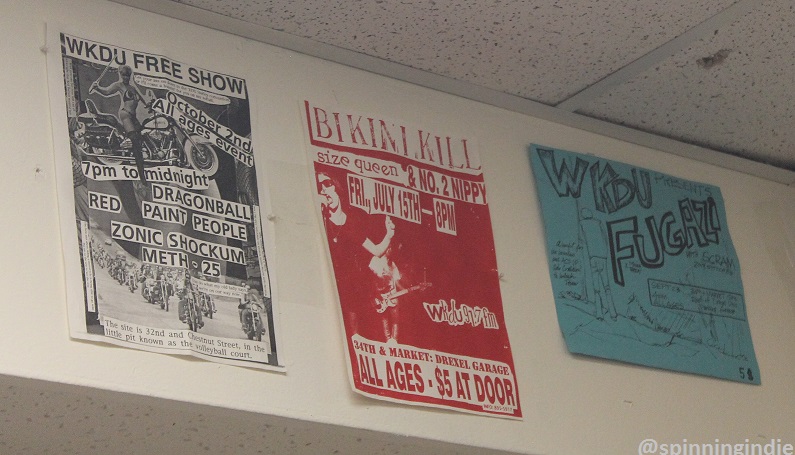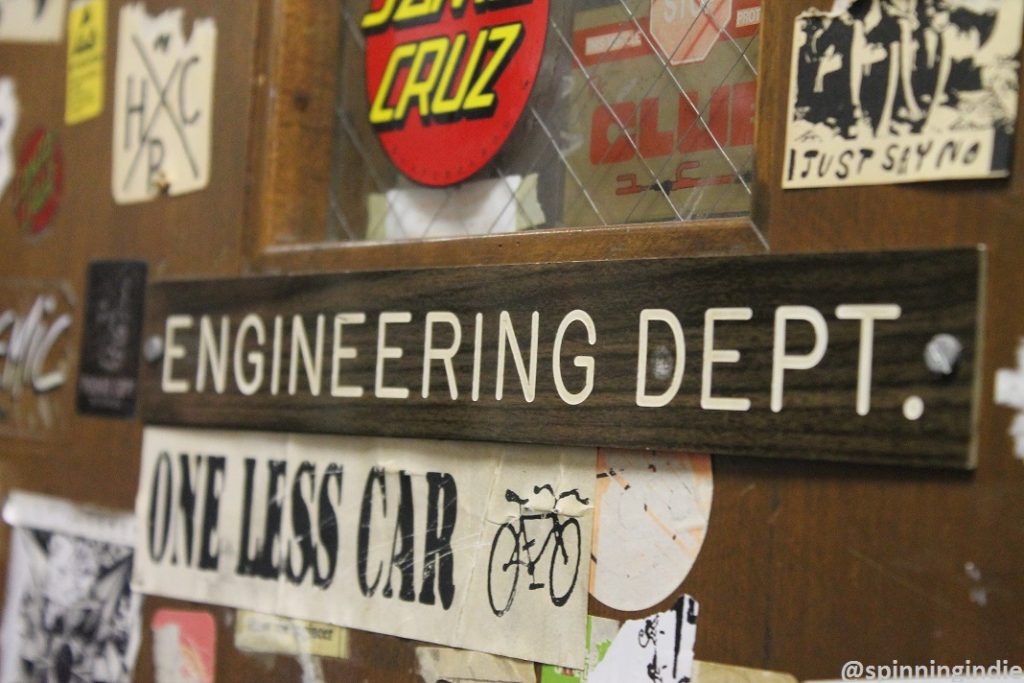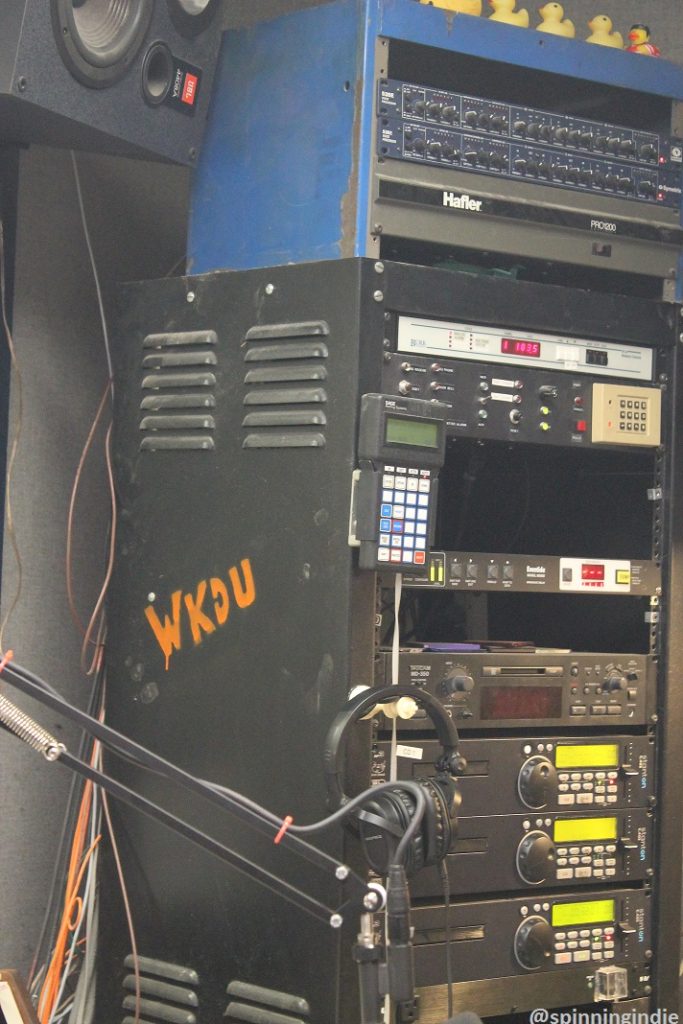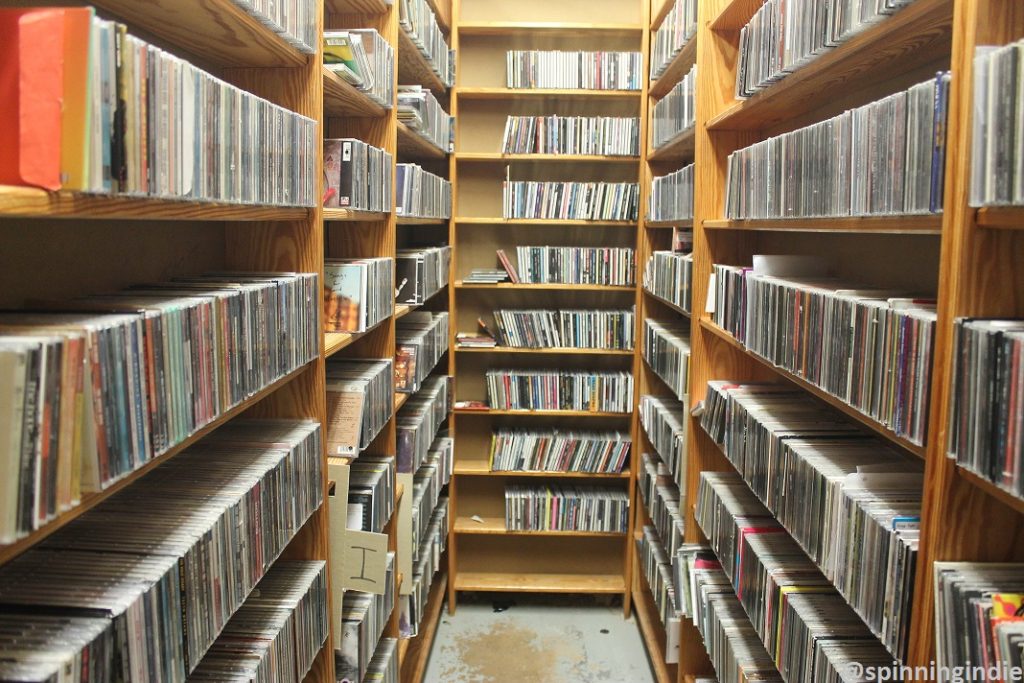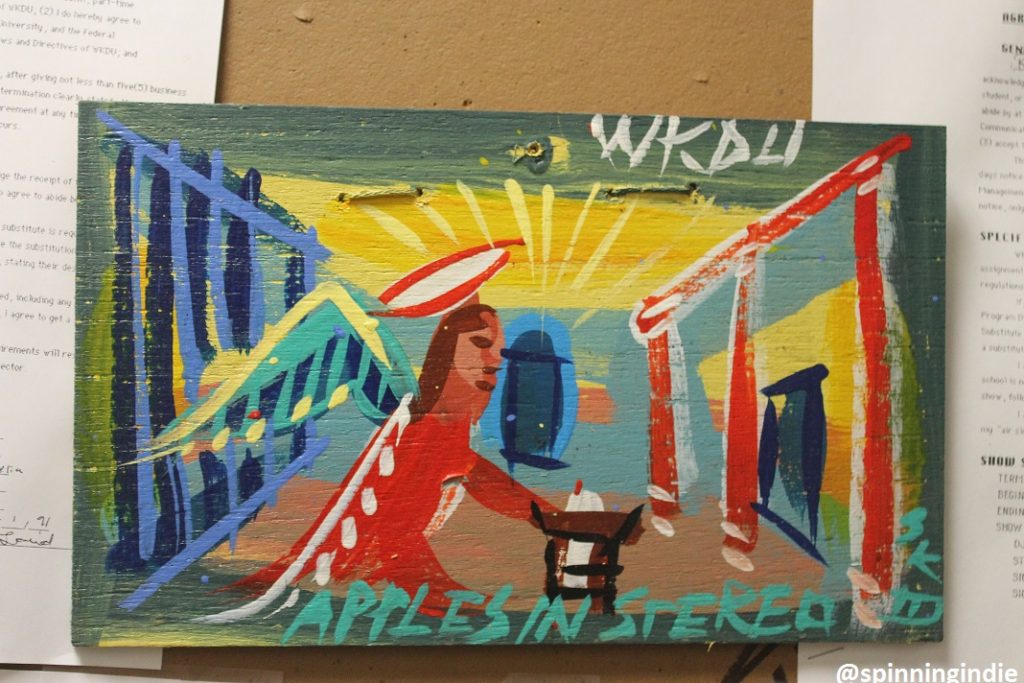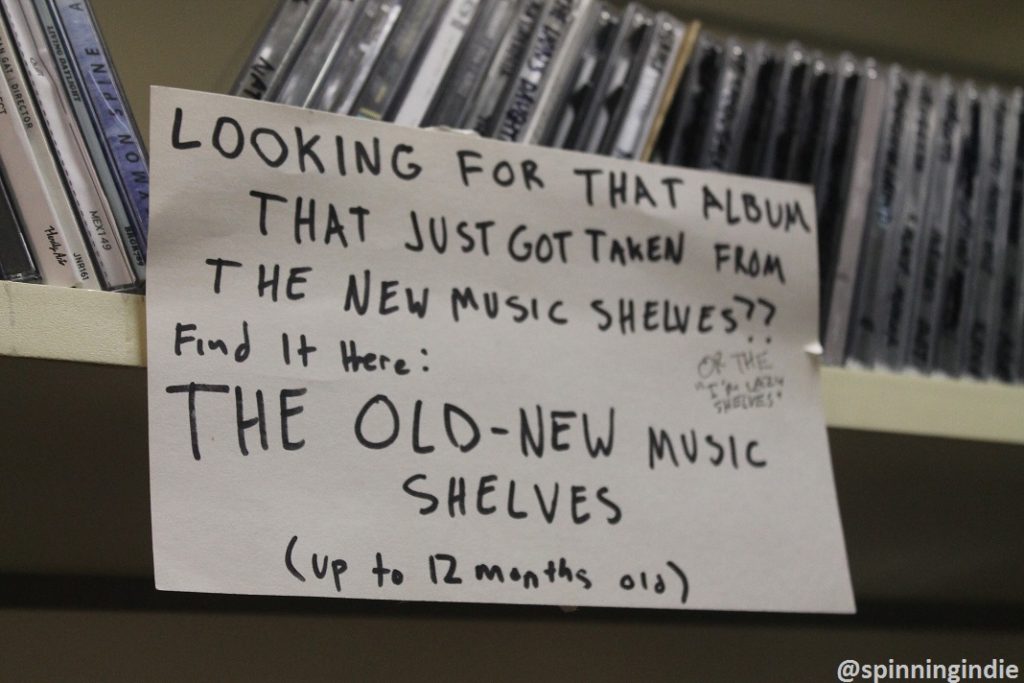There’s nothing like visiting a college radio station that you listened to in your youth, so I was in full-on fan girl mode when I set foot in college radio station WKDU in Philadelphia. The Drexel University radio station was one of the spots (you can listen at 91.7 FM) that I would lock in to while spinning my stereo dial while in college near Philly. It’s likely that I dug their punk rock and new wave music at the time and chances are high that I rang them up to take advantage of free tickets to shows when I was a cash-poor student.
Oddities and Ephemera on the WKDU Tour
Well, my October 20, 2016 visit to WKDU did not disappoint and there were still many hints of the 1980s past that first endeared me to the station. Shelves full of music consumed a closet-like library space, stickers plastered on doors and cabinets hinted at music and radio history, and hand-made show flyers sent me on a nostalgia trip, reminiscing about the days of Fugazi and Bikini Kill shows. One of the on-air DJs that I met (host of the “Aging Anarchist’s Radio Program“) even started at WKDU in the 1980s, although his program that day included a range of punk, space rock and drone music from many eras. I also noticed another retro touch, as the DJ kept track of the music being played using a paper playlist.
The WKDU space was full of amazing oddities and ephemera, including a creepy alien mannequin, toy army figures and industrial sized reflectors glued to the ceiling, several bowling pins, political drawings, a sticker-covered car bumper, an old TV with a WKDU cut-out inside of it, a Ms. Pac Man arcade game, and a large Santa Claus decoration adorned with faux armor. My personal radio station scavenger hunt check list was overflowing as well. I saw not only a Leo Blais-crafted WKDU sign, but also a Steve Keene painting and a life-size Ron Burgundy cardboard cut out. If one had in their mind the stereotype of what a cool, long-time college radio station might look like, WKDU would be it. It’s even located in a basement.
Although I loved every second of my tour, it’s a bit of a blur for a number of reasons. First of all, I trekked over to the station with a large group of conference-goers from the College Broadcasters Inc. convention as one of the “adult” chaperones. Since we all drifted from space to space in clusters, the visit wasn’t conducive to in-depth interviews. Additionally, by the time of the afternoon visit, I was feeling pretty miserable from a cold that had just kicked into full gear. In spite of it all, I was excited to be seeing an interesting college radio station with other college radio folks, including a few people who had previously toured me around their home college radio stations, including SCAD Atlanta Radio (field trip #39), KCSU (field trip #109), KXUA (field trip #115) and WPRB (field trip #100).
WKDU Radio History, Including Carrier Current Past
Radio at Drexel dates back to the late 1950s, via campus-only carrier current radio station WMAX (aka “the Dragon’s Voice). The January 30, 1959 issue of the Drexel Triangle reports,
RADIO HAS FINALLY COME TO DREXEL! After terms of discussion. radio is a reality. WMAX began its broadcasting services in the early part of this week on an experimental frequency of 1600 KC. Broadcasting will continue on this frequency until the main transmitter is finished. The temporary transmitter is located in the Women’s Dorm, operating with a power of less than one watt. Due to this low power, the station will probably be heard only in the immediate area of the Dorm…When completed, the main transmitter will operate on a frequency of 690 KC and will have a power in the neighborhood of sixty watts. It is believed that this will be more than sufficient to cover the entire campus and adjoining areas.”
College radio participants in 2017 might be surprised to see that the same 1959 article included gendered station roles, stating, “The station still needs staff announcers and engineers for Saturday and Sunday afternoon shows in addition to girls for clerical help.” The station’s initial schedule appears to have had both male and female show hosts, however, with programs focused on pop music, vocal jazz, “study music,” love songs, Frank Sinatra tunes, and dance bands.
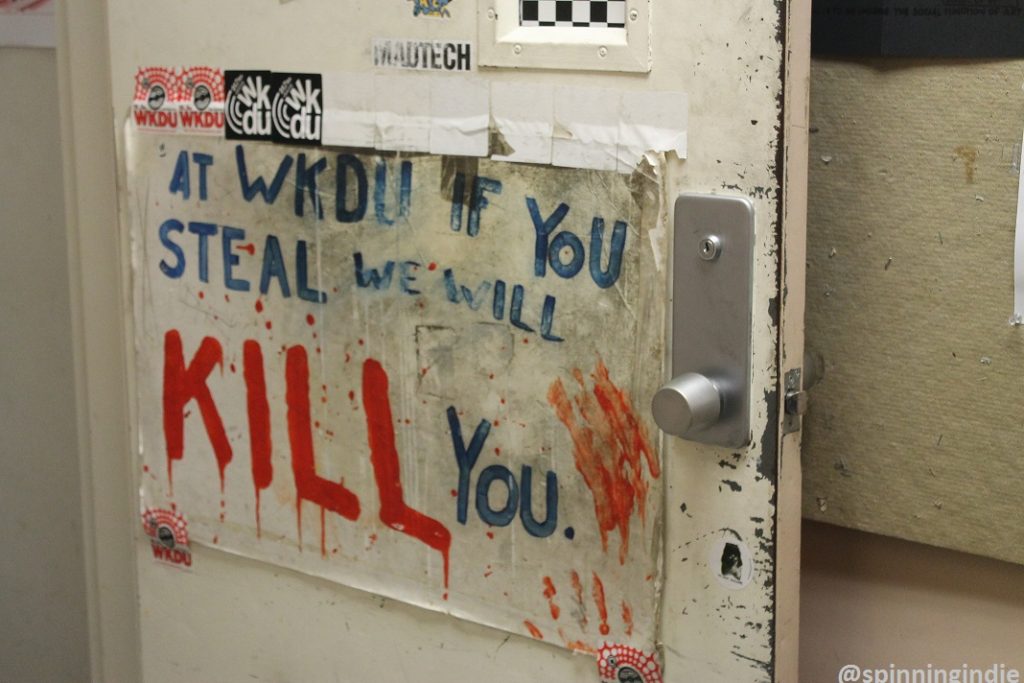
“WKDU if you steal, we will kill you” sign on the door to the college radio station. Photo: J. Waits
WMAX ceased to exist in July, 1962 and according to a letter to the editor of the Drexel Triangle in September, 1962, the station was in the midst of moving its studios and rethinking the overall structure of the college radio station. In the process, the call letters were changed to WXDT. The new station started out by operating experimentally in the fall of 1962. A December, 1962 Drexel Triangle article explained that the station was trying out new programming and could be heard in the Drexel Activities Center and in the library. It was hoped that the signal could be expanded to more student residences the following year and the station’s long-term goal was to have an FM license, which it was eventually awarded in 1971.
After moving to FM and changing its call letters to WKDU, the newly licensed station shared its frequency with the Philadelphia Wireless Technical Institute’s station WPWT until the late 1980s. In 1990, WKDU took over 91.7 FM and started broadcasting 24 hours a day. Radio history fan Arcane Radio Trivia did some sleuthing and has some interesting tales to tell about this arrangement as well as the programming over WPWT (including disco and metal).
I’m glad to see that WKDU maintains an interest in station history. Take a peek through the station’s blog archives to read about some of the reel-to-reel and vinyl gems in its library, as well as the back story on its long-time reggae programming. There’s even some audio from a 1977 WKDU interview with the John Minnis Big Bone Band.
WKDU Today
WKDU is a student-run, free format college radio station. According to the WKDU website, “If you are a current undergraduate or graduate student at Drexel, you are eligible to become a member. All new members undergo a training process that includes sit-ins with current DJs, new music listening, station service hours, and concludes with an on air and operations log test.”
The current WKDU schedule includes a broad mix of music programming, with shows that play reggae, rock, metal, gospel, electronic music, punk, ska, hip hop, soul, jazz, noise, and modern classical. Show titles like “Metal and Coffee,” “Garbage and Noise,” “1100ccs of Hate,” “Kombucha Mother,” “Caribbean Beats” and “Alt Things Considered” hint at the diversity of the station. Live music is also a mainstay at WKDU, with in-studio performances happening on a regular basis. Just last month, there were nine in-studios.
To help get them familiar with WKDU’s programming, new DJs are required to play six new releases per hour on their shows, with that requirement reduced to three new items per hour for established and specialty show DJs.
Thanks to everyone at WKDU for the great tour and warm welcome. This is my 135th radio station field trip report, which means that I have just one more Philadelphia station tour to write up in addition to a couple in New York, and a few in California. My most recent field trips can be found on Radio Survivor and a full list of all my station tour reports is compiled on Spinning Indie.

